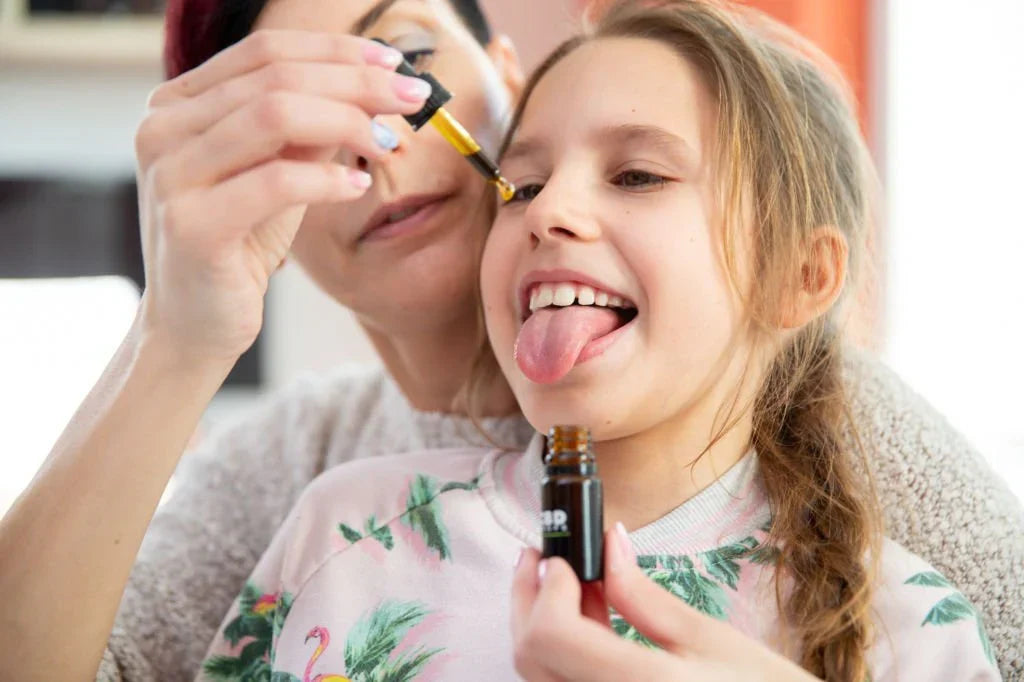Key Takeaways You Should Know
- The only FDA‑approved CBD product for children is Epidiolex, for rare seizure disorders.
- Outside of those strict uses, evidence for CBD in children is limited and inconclusive.
- Risks include sedation, gastrointestinal issues, liver enzyme changes, and interaction with medications.
- Unregulated CBD products may contain contaminants, mislabeling, or unexpected THC.
- In a few cases and under physician supervision, CBD may be used in pediatric populations, but only with tight oversight and monitoring.
What Exactly Is CBD & How It’s Used in Children
Cannabidiol (CBD) is a non‑intoxicating cannabinoid found in hemp and cannabis plants. Unlike THC, it doesn’t produce a “high” at typical doses. In children, CBD is studied primarily in medical contexts—for example, as adjunct therapy for refractory epilepsy. Outside those uses, CBD is being explored (though not proven) for conditions like anxiety, sleep disorders, and neurodevelopmental symptoms.
What Research Supports CBD Use in Children
- Epilepsy (Dravet, Lennox‑Gastaut Syndromes): Multiple studies show that CBD (Epidiolex) can significantly reduce seizure frequency in children.
- In epilepsy trials, CBD is generally well-tolerated, though side effects occur (e.g., liver enzyme shifts, gastrointestinal symptoms).
- For conditions like autism, anxiety, or sleep: some small, early studies and anecdotal reports exist—but they are far from conclusive.
- Pediatric guidelines emphasize that medical cannabis or CBD use in children should be considered only when benefits clearly outweigh risks, and under specialized medical supervision.
Risks, Side Effects & Unknowns in Pediatric Use
- Sedation, Sleepiness, and Lethargy are reported side effects in many pediatric CBD studies.
- Gastrointestinal upset: diarrhea, nausea, reduced appetite.
- Liver effects: CBD can elevate liver enzymes, especially when used with certain epilepsy medications.
- Drug interactions: CBD can interfere with how the body processes other medications (via CYP450 enzymes).
- Unknown long-term effects: Very little data exists on how CBD affects brain development, hormones, or organ systems over the years.
- Product quality risks: because many CBD products aren’t tightly regulated, children may receive mislabeled products, unexpected THC, heavy metals, or pesticide residues.
How CBD Interacts with Other Medications
Because CBD can affect liver metabolism enzymes (especially CYP3A4, CYP2C19), it may increase or decrease blood levels of other drugs children are taking—such as anticonvulsants, psychotropics, or chemotherapy agents. Vigilant monitoring, dose adjustments, and consultation with a pediatric specialist are required.
Legal, Regulatory & Quality Concerns
- FDA stance: Apart from Epidiolex, no CBD products are approved for children. Claims of cure or treatment are unverified.
- Many over-the-counter CBD products are under‑regulated or unverified. Mislabeling is common—some products contain less, more, or additional compounds like THC.
- Because CBD is classified as an active pharmaceutical ingredient in approved drugs, using it in consumables or supplements introduces regulatory uncertainty.
Safe Use Guidelines / When (If Ever) It Might Be Considered
If one were to consider using CBD for a child, best practices include:
- Medical supervision only – involve pediatric neurologists, CBD‑knowledgeable physicians
- Use only pharmaceutical-grade or clinically tested CBD with transparent lab reports
- Start with the lowest possible dose and increase slowly
- Monitor liver function, labs, behavior, and side effects on a regular schedule
- Avoid using alongside multiple medications until drug interactions are assessed
- Use it only when conventional, evidence-based treatments have been tried or are insufficient
- Reassess ongoing need and discontinue if adverse events emerge
- Maintain open communication with healthcare providers
In many cases, non‑pharmacological interventions (sleep hygiene, therapy, diet, behavioral supports) should remain primary.
Frequently Asked Questions (FAQ)
Q: Will CBD make my child “high”?
A: No—pure CBD is non‑psychoactive, but contaminated products or trace THC can cause unexpected effects.
Q: Is there a “safe dose” for children?
A: Not universally. Doses in epilepsy trials may go high (e.g., tens of mg/kg), but outside that use, there’s no consensus.
Q: Can CBD help with ADHD, anxiety, or sleep in kids?
A: Some early studies and anecdotal reports suggest potential, but scientifically, it remains unproven and risky without supervision.
Q: How soon are effects seen?
A: For seizures, effects may be assessed over weeks. For milder symptoms (sleep, calm), changes may be subtle and gradual.
Q: Should I give CBD to children at home, without medical oversight?
A: That is not advised. Without oversight, risks are higher. Safe use should always involve medical supervision.
Alternative Conclusion: A Balanced, Cautious Hope
CBD’s applications in pediatric health hold real promise—especially in conditions where conventional therapies fall short, such as drug‑resistant epilepsy. But promise is not proof. The current landscape demands humility, rigor, and safety.
For most children, non‑drug strategies should remain foundational. If CBD enters the picture, it should be under expert care, with high‑quality products, minimal dosing, and ongoing oversight. Over time, research may expand the safe, evidence‑based uses of CBD in children—but until then, caution and transparency must lead the way.
At Burning Daily, we advocate for clarity, science, and ethics over hype. Any CBD content referencing children should emphasize medical guidance, rigorous testing, and respect for uncertainty. Always consult pediatric specialists before considering CBD for a child.

